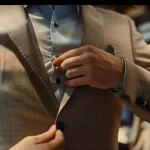Introduction
Data storage and synchronization have become crucial in today’s digital world, where large files and folders are a norm. A mirror folder can be a lifesaver in ensuring that your data is safe, accessible, and synchronized across devices. In this post, we will take a deep dive into mirror folder 42GB, explaining what it is, why it’s important, and how to set it up efficiently using different tools. Let’s begin.
What is a Mirror Folder?
A mirror folder is an exact replica of a source folder. The mirror folder not only contains the same files and subfolders as the original but also keeps them updated automatically. This means that any change you make in the source folder, whether it’s adding, deleting, or modifying files, will reflect in the mirrored folder in real-time or during the next scheduled sync.
For a 42GB folder, mirroring is particularly useful, as it ensures that this large chunk of data remains protected, synchronized, and accessible, regardless of where you access it from.
Why Mirror a 42GB Folder?
Mirroring a 42GB folder has several important advantages that can help both individuals and businesses in their daily operations. Let’s take a closer look:
1. Data Backup
One of the most common reasons to mirror a folder is for data backup. A mirror folder ensures that if anything happens to your original folder (due to system failure, accidental deletion, or corruption), you always have an up-to-date copy of the data.
2. Syncing Data Across Devices
In today’s multi-device world, it is common to work on files across different platforms and devices. Mirroring a folder allows you to keep the data synced across devices. This ensures that the latest version of your files is accessible on your desktop, laptop, smartphone, or any other device that supports the syncing tool.
3. Collaborative Work
Mirrored folders are excellent for collaborative work environments. Teams can work on shared folders that sync automatically, ensuring all members have access to the latest updates and modifications. This also eliminates the risk of file version conflicts.
4. Efficiency
By mirroring a large folder like a 42GB folder, you can ensure that every change is immediately reflected across all instances of the folder. This makes working with large sets of data much easier and more efficient, reducing the need for manual updates.
5. Remote Access and Cloud Integration
Mirrored folders can also be stored on cloud services, which provides remote access to your data. This is ideal for people who need to access their large files from different locations, without having to worry about transferring or manually syncing files.
Tools for Mirroring a 42GB Folder
Now that we understand the importance of a mirror folder, let’s look at some tools you can use to mirror a 42GB folder effectively.
1. SyncToy (Windows)
SyncToy is a free utility developed by Microsoft to help with synchronizing folders. It’s easy to use and offers several synchronization options that are useful for mirroring folders.
Features:
- Easy to Set Up: SyncToy provides an easy-to-navigate interface for setting up folder pairs and synchronization tasks.
- Multiple Sync Options: You can choose from several synchronization modes such as Synchronize, Echo, and Contribute. The Echo option is ideal for creating a mirror of your folder as it ensures that files are copied in both directions.
- Scheduled Syncing: Set your sync to run automatically at specified intervals to ensure your data is always mirrored.
2. Robocopy (Windows)
Robocopy (Robust File Copy) is a built-in command-line tool in Windows that is extremely efficient for large-scale data copying and synchronization tasks. It’s especially useful for mirroring a 42GB folder.
Features:
- Speed: Robocopy is designed for copying large amounts of data and works extremely fast compared to other tools.
- Resumable Transfers: It can resume copying in case of interruptions, which is essential for large folders like 42GB.
- Error Handling: Robocopy automatically retries failed transfers, ensuring that your data is fully copied.
3. rsync (Linux and macOS)
rsync is a powerful command-line tool available for Linux and macOS that is widely used for file synchronization. It is one of the best options when working with large folders, such as a 42GB folder.
Features:
- Incremental Updates: Only modified files are copied after the initial sync, saving time and bandwidth.
- Compression: rsync can compress data during transfer, which can reduce the amount of storage and bandwidth required.
- Flexible Syncing Options: You can choose how files are transferred, whether they’re updated, deleted, or added.
4. MirrorFolder (Windows)
MirrorFolder is a specialized tool designed for mirroring folders in real-time. It is a paid tool but comes with robust features that can be useful for users looking to mirror a 42GB folder.
Features:
- Real-time Sync: MirrorFolder syncs changes to the mirrored folder as soon as they are made in the original.
- File Versioning: The tool allows you to keep multiple versions of a file, giving you added backup safety.
- Auto-backup: It automatically takes backups of the folder, ensuring you never lose any data.
5. Cloud Storage Services (Google Drive, Dropbox, OneDrive)
If you’re looking for an easy, cloud-based solution, services like Google Drive, Dropbox, and OneDrive offer folder synchronization capabilities. By using these services, you can create a mirrored folder in the cloud, which offers the additional benefits of remote access and disaster recovery.
Features:
- Remote Access: Files stored in the cloud can be accessed from any device with internet access.
- Version Control: Most cloud services provide version history, so you can access older versions of your files.
- Storage Limits: While free versions provide limited space, you can opt for paid plans to mirror a large 42GB folder in the cloud.
How to Set Up a Mirror Folder for 42GB
Setting up a mirror folder for a 42GB folder is simple, especially when using the right tools. Here’s a step-by-step guide for mirroring a folder:
1. Choose Your Tool
Pick one of the tools mentioned above based on your operating system and specific needs. For instance, use SyncToy if you’re on Windows, or rsync if you’re using Linux or macOS.
2. Select the Source Folder
Decide which folder you want to mirror. For example, if you have a 42GB project folder containing important files, this will be your source folder.
3. Select the Destination Folder
Next, decide where you want your mirrored folder to be stored. This could be a different drive on your computer or an external storage device. If you’re using a cloud service, you can choose the cloud storage location.
4. Configure Syncing Options
Depending on the tool, configure the syncing options. If you’re using SyncToy, select the Echo option for mirroring, or if using rsync, use the –mirror flag.
5. Start the Synchronization
Once everything is set up, initiate the synchronization process. The tool will begin by copying all files from the source to the destination folder.
6. Set Up Regular Syncing
For real-time syncing, use tools like MirrorFolder or set up scheduled syncing in SyncToy or Robocopy. This ensures your data remains up to date.
Key Considerations for Mirroring a 42GB Folder
While mirroring a large 42GB folder is relatively straightforward, there are some factors you should keep in mind:
1. Storage Space
Ensure that the destination location has enough space to store the entire 42GB folder. If you’re syncing to a cloud service, verify that you have the required storage capacity in your account.
2. Sync Speed
The speed of the sync process depends on several factors, such as the tool you’re using, the speed of your hard drive, and your internet connection (if syncing to cloud storage). Be prepared for the initial sync to take some time, especially with large folders.
3. Security and Encryption
If you’re storing sensitive data, it’s crucial to choose a tool that offers encryption. Some cloud services automatically encrypt your data during transfer and storage.
4. Error Handling
Ensure that the tool you use has good error-handling capabilities. Mirroring large folders can occasionally result in errors, and tools like Robocopy provide automatic retries to handle these situations.
5. Regular Backups
It’s always a good idea to make periodic backups of your mirrored folder, especially if it contains critical data. You can set up the tool to automatically back up the folder or do so manually at regular intervals.
Troubleshooting Common Issues
1. Mirror Folder Not Syncing
- Solution: Ensure that the syncing options are correctly configured and that both source and destination folders are accessible.
2. Slow Syncing Speed
- Solution: Check your internet speed (for cloud syncing) or disk speed (for local syncing). You may also want to avoid syncing during peak internet usage times.
3. Missing Files After Sync
- Solution: Make sure that the destination folder has enough space to accommodate all the files. Also, check the tool’s settings to see if some files were skipped due to errors.
Conclusion
Mirroring a 42GB folder is an essential process for anyone dealing with large amounts of data. By using the right tools, you can ensure that your files are backed up, synchronized, and accessible from multiple devices. Whether you choose a simple tool like SyncToy or a more advanced option like Robocopy or rsync, mirroring provides security and efficiency for managing large datasets. Don’t forget to consider factors like storage space, syncing speed, and error handling to optimize your mirror folder setup.
FAQs About Mirror Folder 42GB
What is a mirror folder?
A mirror folder is an exact replica of another folder, syncing any changes made in the source folder.
Why should I mirror a 42GB folder?
Mirroring ensures data backup, easy file syncing, and accessibility across devices.
Which tools can I use to mirror a 42GB folder?
Tools like SyncToy, Robocopy, rsync, MirrorFolder, and cloud services can be used.
Can I mirror a folder to the cloud?
Yes, you can mirror a folder to cloud services like Google Drive or Dropbox.
How do I set up automatic syncing?
Set up scheduled syncing through the tool’s settings to sync automatically at set intervals.
Can I mirror a folder over a slow internet connection?
Yes, but syncing may take longer with a slow connection, especially during the initial sync.





